#Mahajanapadas
Explore tagged Tumblr posts
Text
Exploring the Mahajanapadas and Great nations attire (600BCE - 300BCE)
Credit: Rohit Bose@boseoninsta
Art By: ArsalanActual@arsalanactual
#IG#Instagram#Rohit Bose@boseoninsta#Recreating From Art Part 5#Art By ArsalanActual@arsalanactual#Mahajanapadas#Great Nations Attire#Vedic India#600BCE - 300BCE#Fashion
2 notes
·
View notes
Text
Mahajanapadas map | 16 Mahajanapadas History, Capital
Mahajanapadas map | 16 Mahajanapadas History, Capital & Location Mahajanapadas map | 16 Mahajanapadas History, Capital & Location 16 Mahajanapadas 6th Century BC Due To The Widespread Use Of Iron In Eastern Uttar Pradesh And Western Bihar, Conditions Were Created For The Formation Of Large Regional And District States. Due To The Iron Weapons, The Warrior Classes Began To Play An Important…
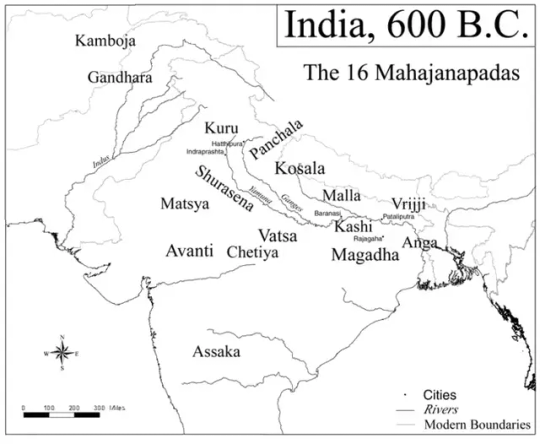
View On WordPress
#16 Mahajanapadas History#Anga#Ashmak#Avanti#Chedi#Gandhar#Kamboj#Kashi#Kosala#Kuru#Mahajanapadas#Mahajanapadas map#Mall#matsy#Panchal#Soorsen#Vajji#Vats
0 notes
Photo

Shishunaga Dynasty
The Shishunaga Dynasty (also Sishunaga/Shaishunaga Dynasty) ruled the Magadha Kingdom in ancient India from c. 413 BCE to c. 345 BCE (in some sources from 421 BCE). It is said to be the third imperial dynasty of Magadha after the Brihadratha and the Haryanka, though the Brihadratha Dynasty is considered as mythical now. The first ruler of the dynasty was Shishunaga himself after whom it has been named, who came to power when the people revolted against the earlier Haryanka Dynasty in the 5th century BCE. The Shishunaga Dynasty had a very short reign before it was succeeded by the Nandas and then the Mauryas, but it too contributed to the solid foundation of the Magadhan Empire which was to dominate the Indian subcontinent for the upcoming centuries.
India Before the Shishunagas
After the Vedic civilization took its roots in the Indian subcontinent from around 1500 BCE, various political units rose in northern and northwestern India. This changed from the 6th century BCE onwards when some kingdoms rose to the east in the fertile Indo-Gangetic plains. During this time, the Indian subcontinent formed mainly into two political units – the Janapadas (which roughly means foothold of the common people) and the Mahajanapadas (the greater foothold of the people). There were 16 Mahajanapadas, and in the 6th century BCE, four out of them became very powerful – Kosala, Avanti, Vatsa, and finally Magadha. The ancient kingdom of Kosala falls roughly to some parts of the present-day Uttar Pradesh state in India. Avanti was Central India and now the states of Madhya Pradesh and Chhattisgarh, and Vatsa was also another part of modern Uttar Pradesh state.
The most powerful of them was Magadha, which would go on to dominate the entire subcontinent during the time of the Mauryas. All the polities close to Magadha except Avanti were defeated in battle and gradually annexed by the warrior king of Ajatashatru (r. c. 493/492 BCE - c. 462/460 BCE) of the Haryanka Dynasty. He also defeated the powerful confederation of the Vrijjis to the immediate north with their capital at Vaishali after 16 years of ancient Indian warfare from c. 484 BCE to c. 468 BCE. By the time Shishunaga ascended to the throne, Magadha, roughly corresponding to the present-day provinces of Bihar, Jharkhand, Uttar Pradesh, Odisha, West Bengal, and the countries of Bangladesh and Nepal, had a very effective system of administration and government, a powerful army and a flourishing trade network.
Continue reading...
40 notes
·
View notes
Text
History of the Matsya Kingdom
Idk if y'all are interested or not, But I am compiling the facts I found out about Matsya or not, but I am still doing this post, haha-
So basically there was this King of Chedi called Uparichara Vasu. He was a friend of Indra's, and he was so special for Indra that he was gifted a flying chariot.
Uparichara was married to this lady named Girika, with whom he had many sons, as was normal.
Now comes the creepy part. One day he was roaming around, thought of his wife and well, ejaculated out of a sudden. He scooped his semen as he felt that "it was wrong to waste the semen in a fertile time".
So he scooped it into a leaf (ew) and gave it to a bird, to give it to his wife. IDK what she was supposed to do with it, but yeah-
so the bird dropped the leaf into the water, and this fish, who was actually an Apsara cursed to be a fish, swallowed it.
Now some fishermen caught it, and they opened her stomach to see two living human babies inside. They took the kids to the King, who took the boy, and gave the girl to the chief fisherman.
This girl grows up to become Satyavati. And the boy? He is named Matsya, and is later on given a part of Chedi, where he forms his own kingdom, named after him, aka Matsya.
Now, Uparichara is Chandravanshi King, who is descended from both Yadu and Puru, like most Kings of that time.
Historically, Matsya was one of the 16 Mahajanapadas. Geographically, it is to the south of Kurujangala and Shurasena Kingdom, hence, in present day Rajasthan. Some parts might have been part of MP and UP.
Pali Literature shows Matsya Kings as descendants of the Shurasena Kingdom.
The Matsya King featured in the Mahabharata is Virat, and it is in this kingdom, that the incognito year of the story takes place. Virat has many brothers and relatives as per the story.
He is married to Sudeshna, who is referred as Kaikeyi, so she is probably from Kekaya. Her brother is Kichaka, who is one of the most powerful dudes of the time. He is the commander-in-chief of Matsya.
Virat has four children, as per the Mahabharata, three sons Shweta, Shankha and Uttar, and one daughter Uttara. The order of these children is not specified, though.
Uttar is a very important character during the Virat War, when he and Arjun go and face the Kaurava army. Dude very naturally chickens out, but doesn't take Arjuna's credit at all.
As a token of credit, Virat requests Arjun to marry his daughter, which he (thankfully) refuses. Arjun instead sets up his student with his son, and the marriage takes place.
This marriage is described in very detail, with an assortment of gifts exchanged on both sides, and such a long list of gifts. Matsya is definitely rolling in gold.
Haha, how funny, how many sites call Virat an idiot and incompetent king, when he is called just so many times. FYI, despite so many allies, the Panchala and Matsya forces form the major part of the Pandava army.
Virat is a very crucial person in the war as well, seeing how he is one of the only Maharathis from their side, apart from Drupada, Arjuna and Abhimanyu.
Uttar dies on the 1st day of the war, after a fight with Shalya. He has defeated Shalya, but instead waits to taunt him, and Shalya kills him in the meanwhile.
Angered at his brother's death, Shweta goes berserk, attacking whoever comes in his way. Bhishma kills him with the Brahmastra, and unlike his would-be nephew, Shweta does NOT survive. The Pandava army "mourn" the loss of their "hero".
Shankha dies on the fifth day, at Drona's hands, then Virat follows him in the same manner on the 15th day. The rest of the Matsyas are either killed by Drona on the 14th and 15th days, or by Ashwatthama on the night of the 18th day.
Uttara is the only surviving Matsya kid left, and her son Parikshit and his descendants, the only ones carrying the blood of the Matsyas.
BTW, by this logic, aren't Uttara and Abhimanyu cousins? Like, very distantly yes, being Chandravanshis with Puru and Yadu's blood but see-
Uparichara Vasu-> Satyavati-> Vichitraveerya->Pandu->Arjun->Abhimanyu and
Uparichara Vasu-> Matsya->Son->Son->Virat->Uttara unless Virat isn't of Arjun's generation, but Pandu's? He is mentioned as aged so much, and he and Drupada are always mentioned together-
It is possible that Virat was closer to Karna in age than the Pandavas, and Uttara can still marry Abhimanyu, as she is the youngest kid (until one of her brothers is younger than her?)
BTW, they ain't direct cousins, even by the logic I specified above, since all the human blood in Arjuna is from Kunti, not Pandu. So Abhimanyu is what....1/4 god, 3/4 Yadava(?) technically?
#mahabharat#mahabharata#hindu mythology#analysis#kingdoms of mahabharata#matsya kingdom#uttara#abhimanyu x uttara#uttaraa#abhimanyu x uttaraa
44 notes
·
View notes
Text
If you all ever get the chance, look up janapadas and mahajanapadas in vedic times. thats when caste was institutionalised, and apparently they even had the world's first republic in vaishali
I'm always criticizing eurocentric fantasy worldbuilding, but one thing I think it's underused are city-states and trade republics and leagues. Not that they don't exist, but they're often in the background, the fantasy genre is so focused on monarchies and dynasties and noble drama, while those systems have so much room for intrigue and stuff without getting into "who's the TRUE heir of the super magical monarch" (yes, I know they had aristocratic families that ruled almost as monarchs, but trust me, Medici drama is another beast from regular feudal stuff)
Venice with its stupidly complex election system and their eternal rivals in Genoa, Florence home of the Rennaissance, the Hanseatic League, and lesser known examples like Novgorod, the Polish-Lithuanian Commonwealth, the Taifa of Córdoba, the Consolat de Mar (technically not a republic but kind of an Iberian Hansa) and if we go farther back, the leagues of city states of antiquity... you know what, I'm bored of feudalism. Next time I do a fantasy setting, it will all be city states and republics. Fuck feudalism.
5K notes
·
View notes
Text
and what if i start dressing like a man from the early mauryan period. what if i start dressing like im from a mahajanapada. what then.
1 note
·
View note
Text
Rajgir Unveiled: Bihartour's Journey in Showcasing the Hidden Gem of Bihar
Introduction
Rajgir, an ancient city nestled in the Indian state of Bihar, is a place that resonates with history and spirituality. This city, known for its scenic beauty and historical significance, attracts tourists from all over the world. Bihartour, a local business based in Rajgir, has played a crucial role in showcasing the city's charm to tourists and making their visits memorable. In this article, we will delve into the significance of Rajgir and how Bihartour has contributed to the growth of tourism in the region.
Rajgir: A Glimpse into the Past
Rajgir is a city with a rich history dating back to the time of Lord Buddha. It served as the first capital of the Magadh Mahajanapada, a major ancient kingdom. The city is mentioned in various Buddhist and Jain scriptures and is closely associated with Lord Buddha's life, including the Gridhakuta Hill, where he delivered many important sermons.
The city is also home to several hot springs, which are believed to have therapeutic properties, and a cable car ride to the Vishwa Shanti Stupa at the Ratnagiri Hills offers breathtaking panoramic views of Rajgir's natural beauty.
Bihartour: Showcasing Rajgir's Beauty
Bihartour is a business venture that focuses on providing tourists with a comprehensive experience of Rajgir. They offer various tour packages and services to help visitors explore the city's historical and natural beauty.
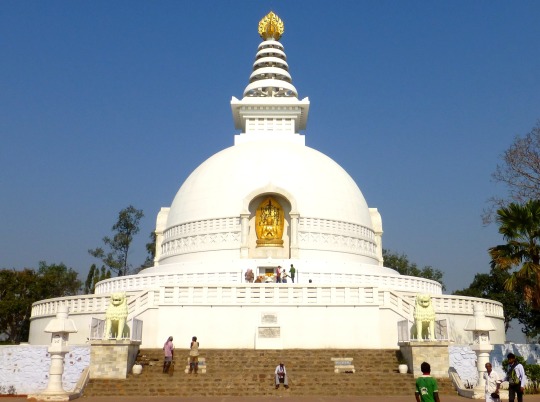
1. Guided Tours: Bihartour provides guided tours to the major historical and religious sites in Rajgir, ensuring that tourists gain a deeper understanding of the city's heritage. Their knowledgeable guides share stories and insights, making the experience both educational and enjoyable.
2. Accommodation: Bihartour offers a range of accommodation options, from luxurious hotels to budget-friendly stays. This makes it convenient for travelers with diverse preferences and budgets to enjoy their time in Rajgir.
3. Transportation: The business also takes care of transportation needs, providing comfortable vehicles for travel within and around Rajgir. This eliminates the hassle of finding suitable transportation for tourists.
4. Cultural Experiences: Bihartour organizes cultural experiences, including dance performances, traditional music, and local cuisine, allowing tourists to immerse themselves in the vibrant culture of Rajgir.
5. Wellness Packages: As Rajgir is famous for its hot springs, Bihartour offers wellness packages that include visits to these rejuvenating natural springs. Tourists can unwind and rejuvenate amidst the therapeutic waters, adding a unique dimension to their trip.
Bihartour's Impact on Rajgir's Tourism
The growth of Bihartour has had a significant impact on the tourism industry in Rajgir. By providing comprehensive packages and services, the business has made the city more accessible and appealing to tourists. This, in turn, has boosted the local economy and provided employment opportunities for residents of Rajgir.
Furthermore, the promotion of Rajgir through Bihartour has attracted a diverse range of travelers, contributing to the cultural exchange in the region. It has also helped preserve and promote the historical and religious significance of the city.
Conclusion
Rajgir, with its historical and spiritual importance, has been a hidden gem for far too long. Bihartour, through its dedicated services, has played a pivotal role in bringing Rajgir into the limelight and making it a must-visit destination. As the business continues to grow and expand its services, Rajgir's rich heritage and natural beauty will continue to captivate the hearts of travelers from around the world.
0 notes
Text
Ancient India - Rise of Magadhas
During 6th Century BCE, a large number of independent kingdoms exist in northern India – some had monarchical form of govt while some were republic In Republics, power of decision making in all matters of state vested with the Public Assembly, where decision was taken by majority vote There were 16 Mahajanapadas during that time – According to Buddhist literature Anguttara Nikaya Anga,…
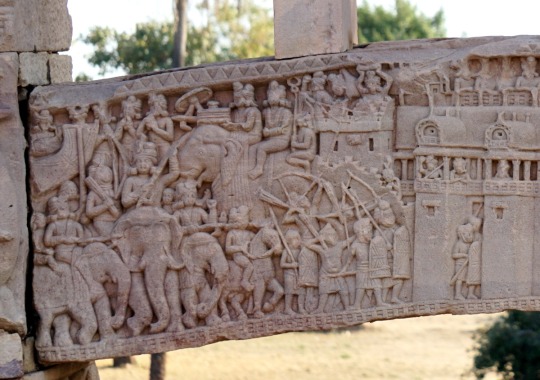
View On WordPress
0 notes
Text
Yeah it's progressive and trendy to hate on Hindus, I guess.
Well, I guess it's time to say some things.
Hinduism is not an Abrahamic religion. "lol Krishna is Vishnu in case you're wondering, he's an avatar of Vishnu kind of like Jesus is the avatar of God etc." he is not. He isn't here to atone for anyone's sins, he is there to vanquish evil, in every age, and maintain balance in the universe. That one sentence made me realize that you had done virtually no research at all.
Also, we do not have religious texts in the way Abrahamic religions like Christianity/Islam have. The Vedas, the Upanishads, are more concerned with philosophy, way of life, etc. There is no dogma, and whatever rules are laid there are for to give structure and purpose to an individual's life.
Another thing you should know is the position of women in Hinduism. I'll copy and paste things from Wikipedia as it is far more eloquent than me.
"Women during the Vedic period enjoyed high status with men in all aspects of life. Works by ancient Indian grammarians such as Patanjali and Katyayana suggest that women were educated in the early Vedic period.[1][2][3] Rig Vedic verses suggest that women married at a mature age and were probably free to select their own husbands in a practice called swayamvar or through Gandharva marriage.[4] The Rig Veda and Upanishads mention several women sages and seers, notably Gargi Vachaknavi and Maitreyi (c. 7th century BCE).[5]
Originally, women were allowed to undergo initiation and study the Vedas. In the Dharmasutra of Hathras, it is mentioned that:
In Mahabharata, the story of Draupadi's marriage to 5 men is a case in point. This pointed to the fact that polygamy was matched with polyandry during the Vedic era. Women could select their husbands in an assembly called swayamwar. In this practice, the father of the woman would invite all the men and the woman would select one, and marry him while the court watched.
Also, in the Puranas, every God was shown in consort of their wives, Vishnu with Lakshmi and Shiva with Parvati). Idols of god and goddesses were depicted with importance to both genders. Separate temples were set up for goddesses, and within each temple, goddesses were treated and worshipped with as much care and devotion as the gods were. There are also specific practices that endure to this day, in terms of preference of worship.
The book Hindu Female Deities as a resource for contemporary rediscovery of the Goddess by Gross Rita.M, 1989, says:
"According to some scholars the positive constructions of femininity found in goddess imagery and in the related imagery of the virangana or heroic woman have created a cognitive framework, for Hindus to accept and accommodate powerful female figures like "Indira Gandhi and Phoolan Devi, The same would not have been possible in Western religious traditions"
Even in the practice of Homa (ritual involving fire, and offerings to fire), every mantra or Shloka is addressed to Swaha, the wife of Agni, instead of Agni himself. Devi Bhagavata Purana: 9.43, says that all requests to Agni had to be made through his wife only:
"O Goddess, Let yourself become the burning power of fire; who is not able to burn anything without thee. At the conclusion of any mantra, whoever taking thy name (Svaha), will pour oblations in the fire, he will cause those offerings to go directly to the gods. Mother, let yourself, the repository of all prosperity, reign over as the lady of his (fire's) house."
This aspect of Swaha as Agni's wife is mentioned in Mahabharata, Brahmavantara Purana, Bhagavatha Purana as various hymns.
n the 6th or 5th century BCE, Queen Mṛgāvatī (in Sanskrit), or Migāvatī (in Prakrit) of the Vatsa mahajanapada ruled as regent while her son Udayana was either a minor or held captive by a rival king, and she earned "the admiration of even experienced ministers."[6][7]
Apastamba sutra (c. 4th century BCE)[8][3] captures some prevalent ideas of the role of women during the post Vedic ages. The Apastamba Sutra shows the elevated position of women that existed during the 4th century BCE:
A man is not allowed to abandon his wife (A 1.28.19). He permits daughters to inherit (A 2.14.4). There can be no division of property between a husband and a wife, because they are linked inextricably together and have joint custody of the property (A 2.29.3). Thus, a wife may make gifts and use the family wealth on her own when her husband is away (A 2.12.16–20). Women are upholders of traditional lore, and Āpastamba tells his audience that they should learn some customs from women (A 2.15.9; 2.29.11).
In the Gupta period instances are not rare of women participating in an administrative job. Chandragupta I, founder of the Gupta Empire, ruled the kingdom jointly with his queen Kumara Devi.[9] Prabhavatigupta was the daughter of Chandra Gupta II of the Gupta Empire and the wife of Rudrasena II of the Vakataka dynasty, and performed administrative duties in her kingdom.[7] Instances of women of the upper classes extending their phase of activities beyond the domestic circle are provided by the queen and queens regent in Kashmir, Rajasthan, Orissa and Andhra. Institutions were established for co-education. In the work called Amarkosh written in the Gupta era names of the teachers and professors are there and they belonged to the female sex.
In the 2nd century BCE, Queen Nayanika (or Naganika) was the ruler and military commander of the Satavahana Empire of the Deccan region (south-central India).[7] Another early female ruler in South Asia was Queen Anula of Anuradhapura (Sri Lanka, 1st century BCE).
Queen Orrisa assumed regency when her son died in the late ninth century and immediately involved herself in military adventuring. Queen Kurmadevi of Mevad commanded her armies on the battlefield in the late twelfth century. Queen Didda of Kashmir ruled as full sovereign for twenty-two years, and Queen Jawahirabi fought and died at the head of her army.
In Sri Lanka, Queen Sugula led her armies against the southern king, her nephew. When pressed by the royal forces, she guided her forces into the mountains, where she built a number of forts. Sugula held out against the king's army for ten years and is remembered in Sri Lankan history as "Sugula, the rebel queen fearless". "
After the Islamic and Dutch, French, British colonisation of India, the position of women in society declined.
All of this is not to say that Hinduism is above criticism. But when you criticise a religion, or its aspects, try to find out why so many people believe in it. Do a little more intelligent research. Criticism of a subject without knowledge of said subject always reveals more about the critic.
Fun fact! The god Vishnu is probably the most famous hindu god and, according to hindu texts, he would stalk women as they were bathing and then steal their clothes.
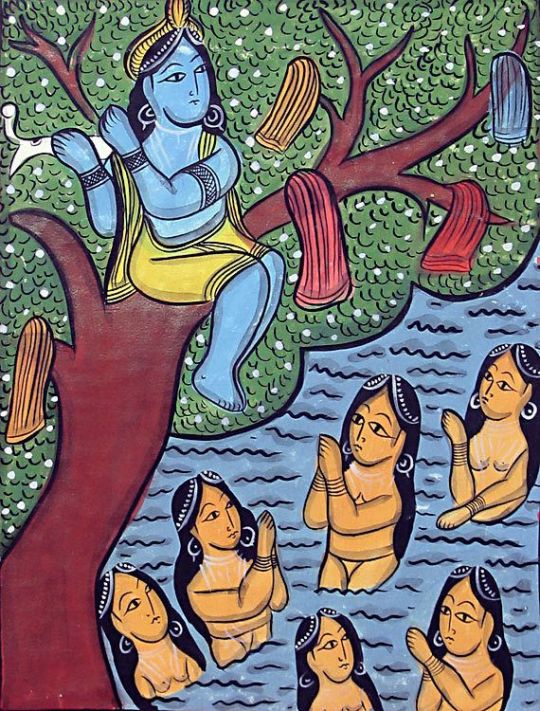
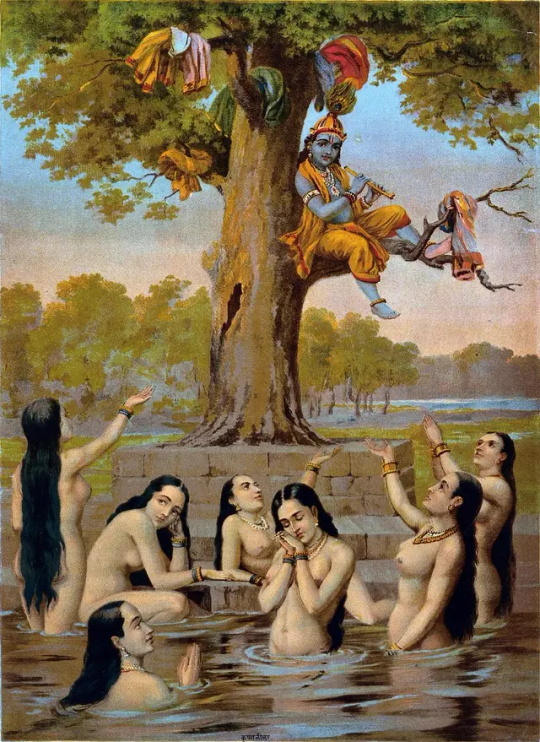
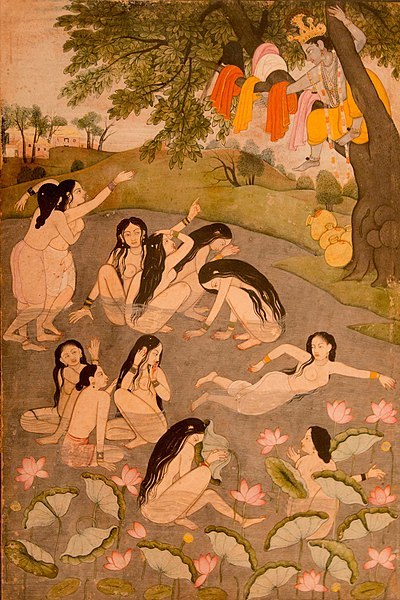
Only after the women begged him would he return their clothes and let them dress themselves and leave. Of course men made lots of art about this beautiful event.



It's funny how male gods act exactly like male humans isn't it? What lesson are hindu women supposed to take from this? Well the metropolitan museum has a perfectly good explanation: "Krishna, the mischievous Divine Cowherd, has stolen the clothes of the bathing gopis, who shiver with cold but also with delight in their devotion to their lord. This splendid allegory of spiritual love-" excuse me what? the splendid what? lol Krishna is Vishnu in case you're wondering, he's an avatar of Vishnu kind of like Jesus is the avatar of God etc. Anyway, the museum details: "it recounts his playful theft of the clothes of the female cowherds, the gopis, who had left their clothes on the Yamuna River bank while bathing. Krishna placed them high in the branches of a tree, in which he is seen perched, daring the gopis to venture from the water. Metaphorically, this story serves to convey the power of devotion, to stand vulnerable before one’s God, secure in the power of bhakti, the unquestioning devotion to one’s god." ah it's not a creepy story it's just like if you love god and you're a woman you need to show him your body and beg him for your clothes and stuff. Makes sense.

Still according to hinduism, humans were created by the god Brahma.


Brahma was a pervert "in love" with his own daughter, the goddess Śatarūpā. She tried to run from him so he grew several heads and arms to reach her no matter where she tried to hide. He grew four heads to look at her from every cardinal direction, she couldn't escape his gaze. He's a buddhist idol still represented with his 4 heads and arms for better stalking.
Fun facts all around... I love religions.
608 notes
·
View notes
Text
indian history map » ancient, medieval & modern history
indian history map » ancient history | medieval history | modern history RigVedic period Map mahajanapada period Map 16 Mahajanapadas » Kashi, Kosala, Anga, Vats, Kuru, Panchal, Avanti, Gandhar 16 mahajanapadas Map Mahajanapadas map | 16 Mahajanapadas History, Capital & Location 16 mahajanapadas Map in English vijaynagar empire Map harsha empire map muhammad bin tughluq empire Map sher…
#16 mahajanapadas Map#Akbar empire Map#allah ud din khilji#allah ud din khilji empire Map#harsha dynasty#harsha empire map#mahajanapada period Map#muhammad bin tughluq empire Map#Revolution of 1857 Map#RigVedic period Map#sher shah suri empire Map#vijaynagar empire Map
0 notes
Text
controversial take but writing a fantasy book set in ancient India and just researching the history of my own country has me very frustrated. So now, the King will be called Jahapana and there will be Mahajanapadas. Anything that sounds fancy and has historical root goes in. I don't care if it's Hindu or Muslim or North Indian or South Indian. Anything that sounds fancy I'm using it.
0 notes
Text
youtube
#ShodasaMahajanapadas#Mahajanapadas#SixteenMahajanapadas#HistoryForTSPSC#HistoryForAPPSC#HistoryForUPSC#HistoryForIAS#HistoryForSSCCGL#HistoryForTSSI#HistoryForAPSI#Youtube
0 notes
Text
History Of India 2 Eastern India Nation Of The Ganges Bengal Odisha Assam
History Of India 2 Eastern India Nation Of The Ganges Bengal Odisha Assam
When we read the History of a vast country like India,with its roots stretching back to over thousands of years,we should remember the landmass and the present poltical maps have no relevance. The Ancient Indian kingdoms were 56 and I have listed them in another article. We have to have a rough division of the Bharatvarsha into four regions for better understanding and remember that the borders…
View On WordPress
#Ancient Indian Kingdoms#Angas#Assam Odisha History#Bengal history#Indian History#Kalingas#Mahajanapadas#Nishadas#Vangas
3 notes
·
View notes
Text
Mahajanapadas | UPSC CSE
0 notes
Photo

India in the Vedic Age, 1500 BCE-500 BCE
A map illustrating the evolution of the cultures on the northern Indian subcontinent with the arrival of the Aryan nomads during the late Bronze Age and early Iron Age known as the Vedic age (c. 1500 – c. 500 BCE), when the Vedic literature was composed, between the end of the Indus Valley Civilisation and the establishment of the Mahajanapadas ("Great Realms") on the central Indo-Gangetic Plain c. 500 BCE.
115 notes
·
View notes
Text
Unlocking the Treasures of Rajgir: The Story of BiharTour
Introduction
Rajgir, a small but historically significant town in Bihar, India, is a place steeped in history and spirituality. It's known for its ancient ruins, monasteries, and its association with Gautama Buddha, the founder of Buddhism. In recent years, Rajgir has emerged as a tourist destination, attracting travelers from all over the world. One company that has played a pivotal role in promoting Rajgir and Bihar's cultural heritage is "BiharTour." In this article, we will delve into both the history of Rajgir and the story behind the business name "BiharTour."
The Enigmatic Charms of Rajgir
Rajgir is a town with a history that dates back to the 6th century BC when it served as the capital of the Magadh Mahajanapada. It was here that Lord Buddha spent a significant part of his life and delivered some of his most important teachings. Today, the town is a repository of ancient sites and religious relics that draw pilgrims and tourists alike.
The town is renowned for its key attractions, including the Vishwa Shanti Stupa, built by the Japanese Buddhist Bhikshu, Nipponzan-Myohoji monk, and the Griddhakuta Peak, which is believed to be the site where Buddha delivered many of his sermons. The hot springs at Rajgir are also popular, with therapeutic properties believed to have healing effects.
The Role of BiharTour
In the midst of this historical splendor, BiharTour stands as a guiding light for tourists. This tour company has been instrumental in opening up the wonders of Rajgir and the broader Bihar region to visitors.
Founded in 2007 by a group of passionate individuals who were born and raised in Bihar, BiharTour has grown into a successful venture. Their aim was to showcase the rich cultural and historical heritage of Bihar to the world, thereby promoting tourism in the region. Over the years, they have expanded their operations to cover other parts of Bihar, making it easier for tourists to explore the state's hidden gems.
What Sets BiharTour Apart?
1. Expert Local Knowledge: BiharTour is unique in that it is run by local experts who have an intimate understanding of the region's culture, history, and traditions. This knowledge allows them to curate authentic and immersive experiences for their clients.
2. Variety of Tours: BiharTour offers a wide range of tour packages, catering to the diverse interests of travelers. Whether you're interested in historical tours, spiritual pilgrimages, or nature getaways, they have something for everyone.
3. Sustainable Tourism: The company is committed to responsible tourism and sustainability. They strive to ensure that tourism benefits the local communities and preserves the environment.
4. Affordable Pricing: BiharTour is known for its competitive pricing, making it an attractive option for travelers looking to explore Bihar without breaking the bank.
Conclusion
Rajgir is not just a town; it's a reflection of India's rich history and spiritual heritage. And BiharTour has played a significant role in bringing this heritage to the world. Through their expertly designed tours and responsible tourism practices, they have helped travelers from all corners of the globe experience the enchanting beauty and deep-rooted culture of Bihar. So, if you're planning a trip to Rajgir or anywhere in Bihar, consider BiharTour as your gateway to an unforgettable journey through this captivating region.
0 notes